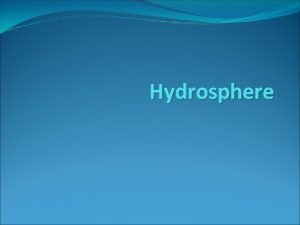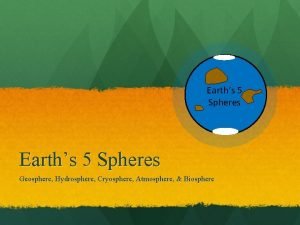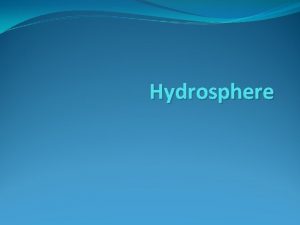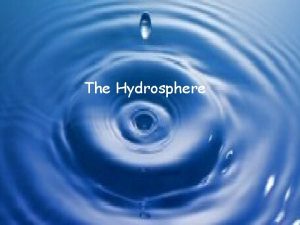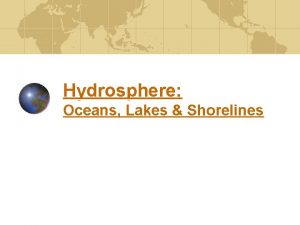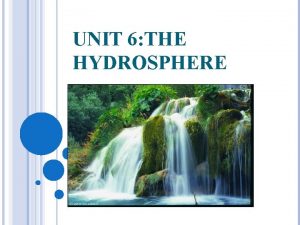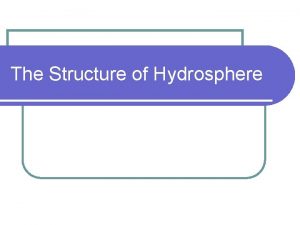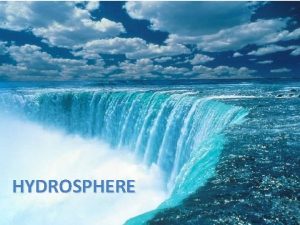Earth Systems Hydrosphere the sphere that includes all









- Slides: 9

Earth Systems Hydrosphere: -the sphere that includes all waters on Earth’s surface, including rivers, lakes, and seas -can sometimes include water over Earth’s surface, like clouds

Earth Systems Atmosphere: -the sphere that includes all gases above the surface of the Earth

Earth Systems Cryosphere: -the sphere that includes all the frozen water on the Earth

Earth Systems Geosphere: -the sphere that comprises all land, rock, and ground that the Earth is made of -this sphere also includes the interior of the Earth

Earth Systems Biosphere: -the sphere that includes all living organisms regardless of where they are found

Earth Systems

Carbon Cycling Carbon Pool or Reserve: a place that stores carbon in different forms -atmosphere: carbon dioxide -fossil fuel: hydrocarbons Carbon measured in Gigatonnes, Gt (1 billion metric tons) -1 metric ton ~ a large bull or small car -1 Gt = one billion large bulls or small cars

Carbon Cycling Use the model to help you answer the questions. 1. Where is most of the carbon stored? Does anything surprise you about the amount of carbon stores in each location? 2. Arrows on the diagram show carbon moves between pools (flux). What chemical processes cause each flux (a-i)? Photosynthesis, respiration, combustion, erosion/weathering, diffusion, ocean mixing and sediment, volcanism 3. What patterns do you see with the flux rates? Are the numbers between pools balanced? 4. What will the net effect of the fluxes between the atmosphere, the land, and oceanic pools be?

